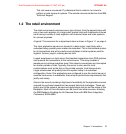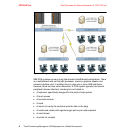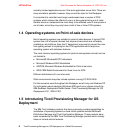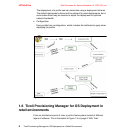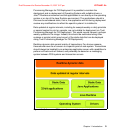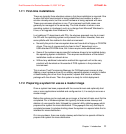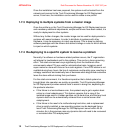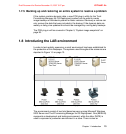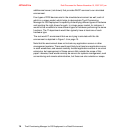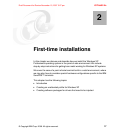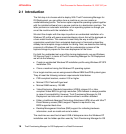Chapter 1. Introduction 11
Draft Document for Review November 15, 2007 3:27 pm 4372ch01.fm
1.7.1 First-time installations
There are typically three situations where a first-time installation is required: One
is when the initial environment is being established and another is when a
solution already exists, but the current hardware is being replaced with new.
These are commons situations in any IT environment and both cases can
generally be managed in the same way. The third situation is when a new
operating system is introduced, such as a change from Microsoft Windows to
Linux, or an upgrade from Windows to Vista.
In a traditional IT department with PCs, the obvious approach may be to insert
the CD with the operating system and proceed from there. However, there are
some pitfalls with this method in the retail environment:
Normally the point-of-service system does not have built-in floppy or CD-ROM
drives. This can of course easily be fixed in the IT department via a
USB-attached CD-ROM drive, but it does require some additional work.
Some of the systems require specific hardware drivers to be installed during
the operating system installation. This requires modifications of the default
installation media or network drive.
Without any additional automation method this approach will not be very
practical with hundreds or thousands of POS systems in the production
environment.
This is where Tivoli Provisioning Manager for OS Deployment comes at play.
Adding a new hardware driver to an existing operating system is simply a matter
of downloading the driver from the provider, unpack and create a software
package with the drivers. Then the system is ready for initial deployment.
1.7.2 Preparing a system for use as a master image
Once a system has been prepared with the correct drivers and optionally had
one or more applications installed and configured on it, it is ready to serve as a
master image.
Before the system can be captured as an image, a final set af tasks must first be
completed. For a Windows system this typically includes some cleanup and
deletion of user-specific data, followed by a special utility called sysprep, which
prepares the system for mass-distribution. The sysprep is the very last step to
complete because it includes shutting down the system in a special state that is
intended for mass distribution.
On Linux systems, there are similar cleanup activities but no special utilities to
prepare the system for mass-distribution.



